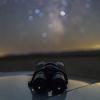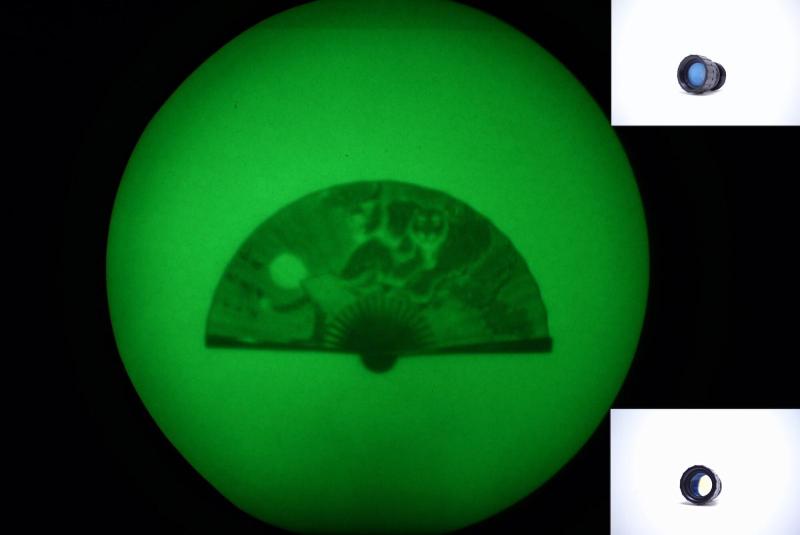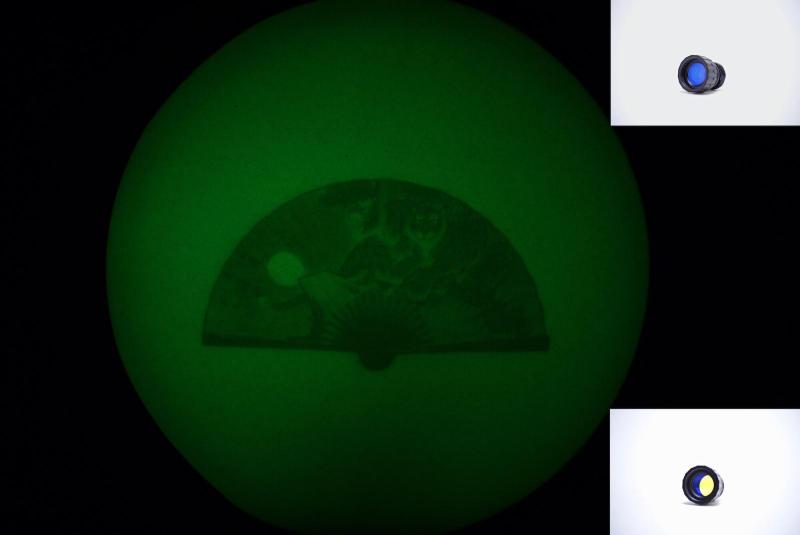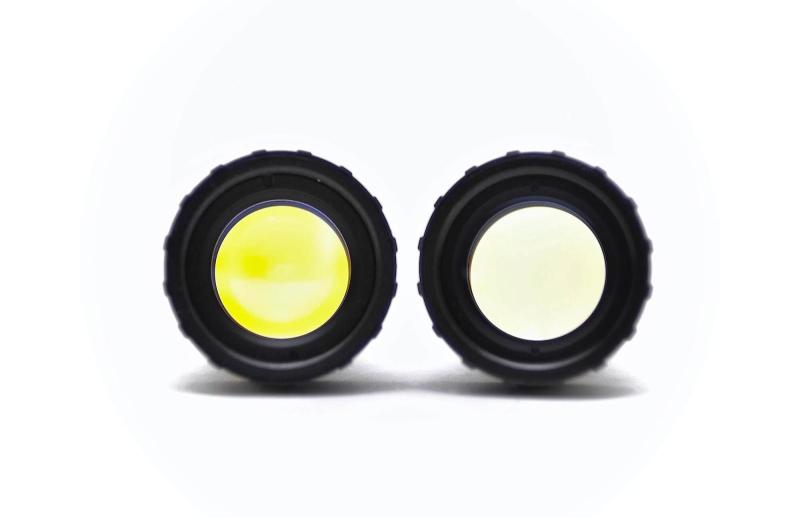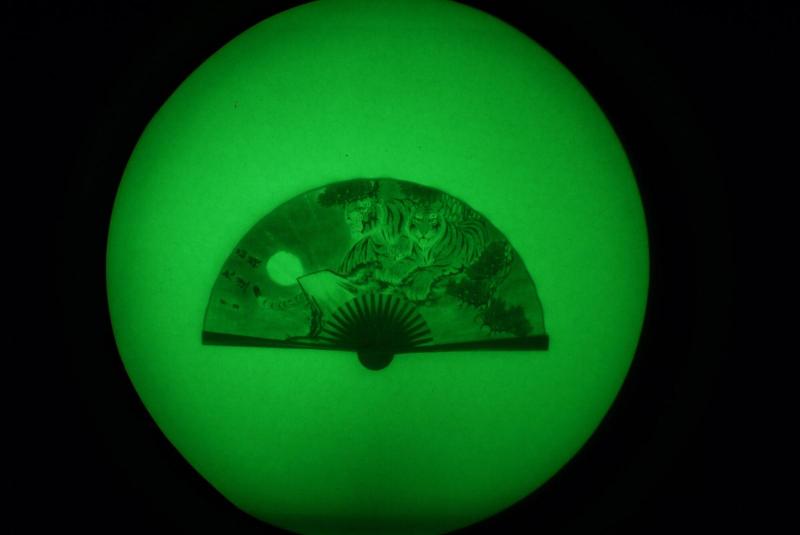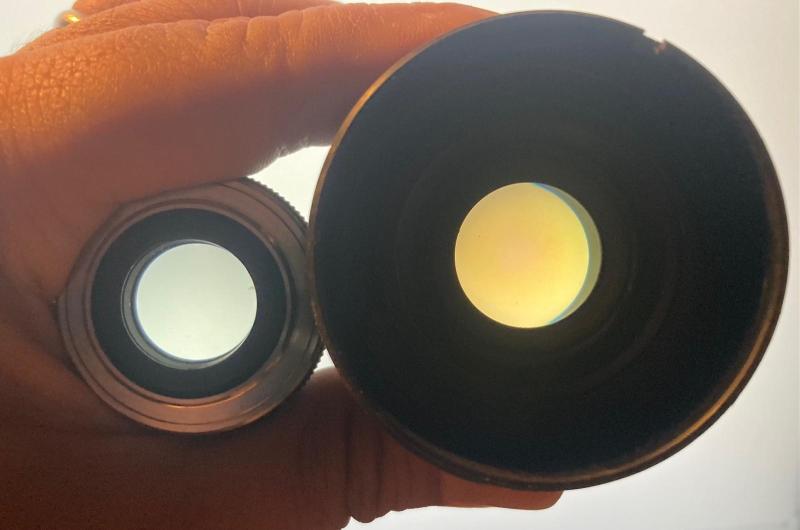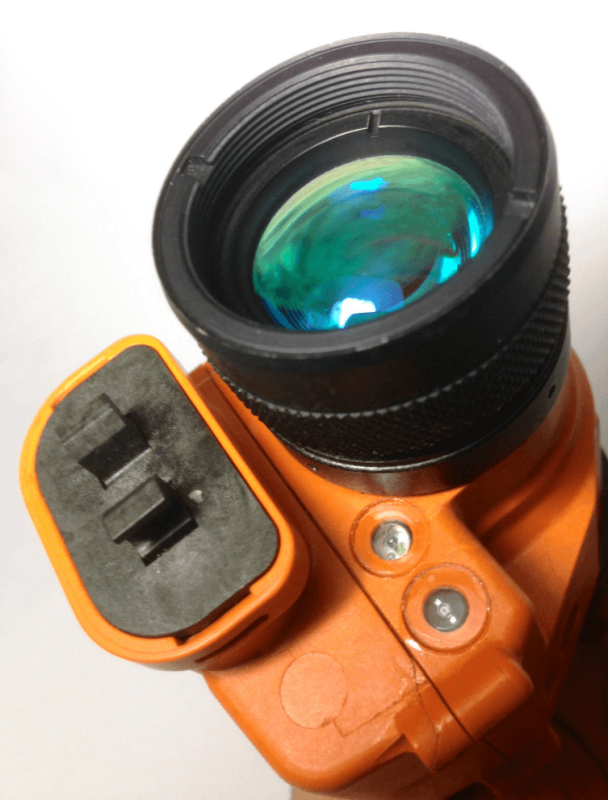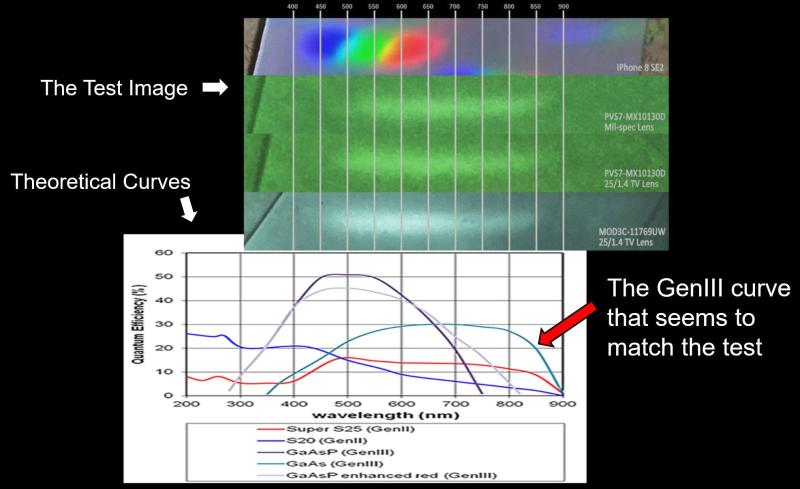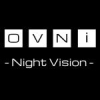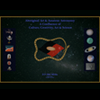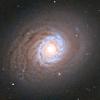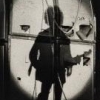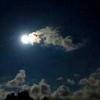Just by chance, I get a door window that has some prism structure what will split the sun light during noon time everyday. I think this might be a good light source to test my NVD's spectrum response. So here it is:
I roughly calibrated the wavelength scale with following data for my iphone SE, the visable range is roughly from 410nm to 680nm, if using 15% sensitivity as threshold:
Based on this very very crude test, it seems my NVD, which has a L3 Harris filmless WP tube, is approximately matching the curve in navy blue following (450nm to 850nm using 15% QE as threshold):
Attached a gif animation as well:
Now my question is, if this test has roughly ok accuracy, then what tube has the purple curve(Gen3 GaAsP)?


